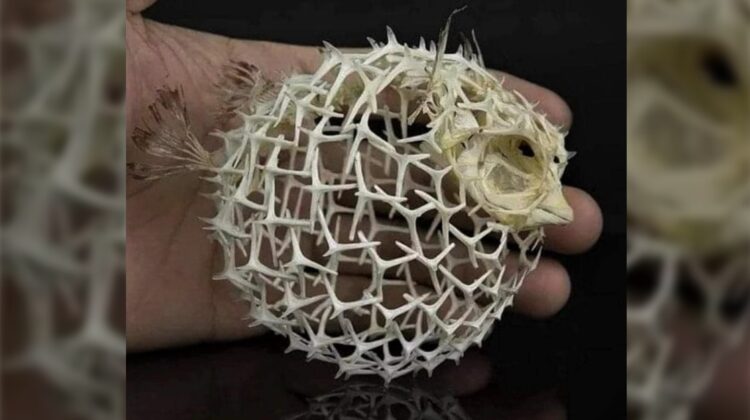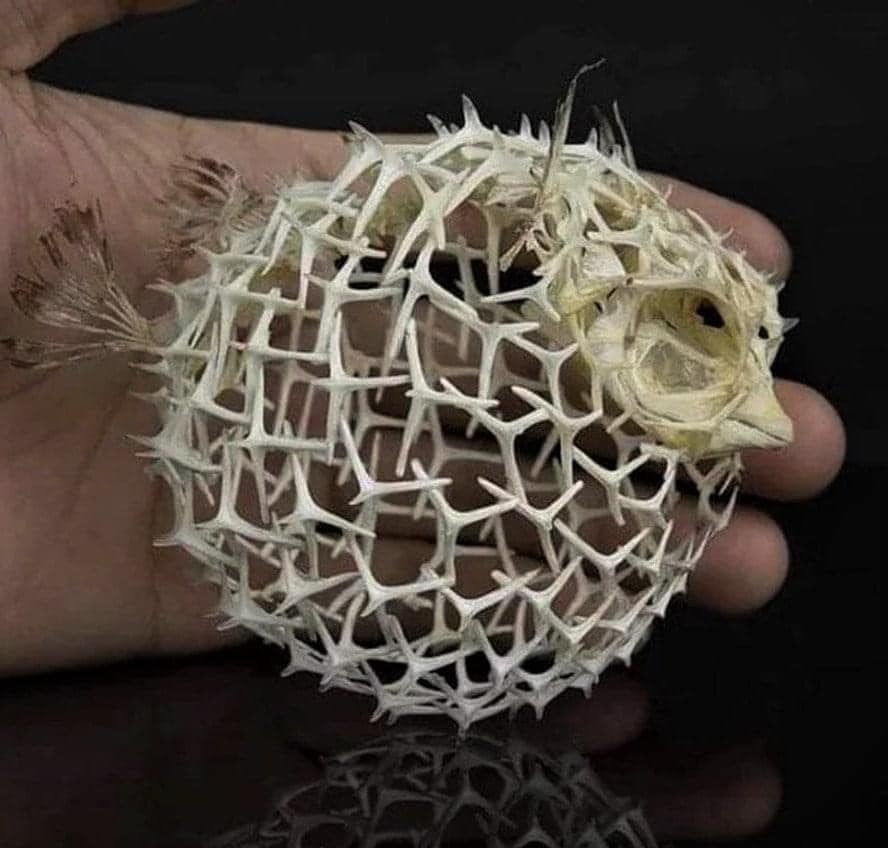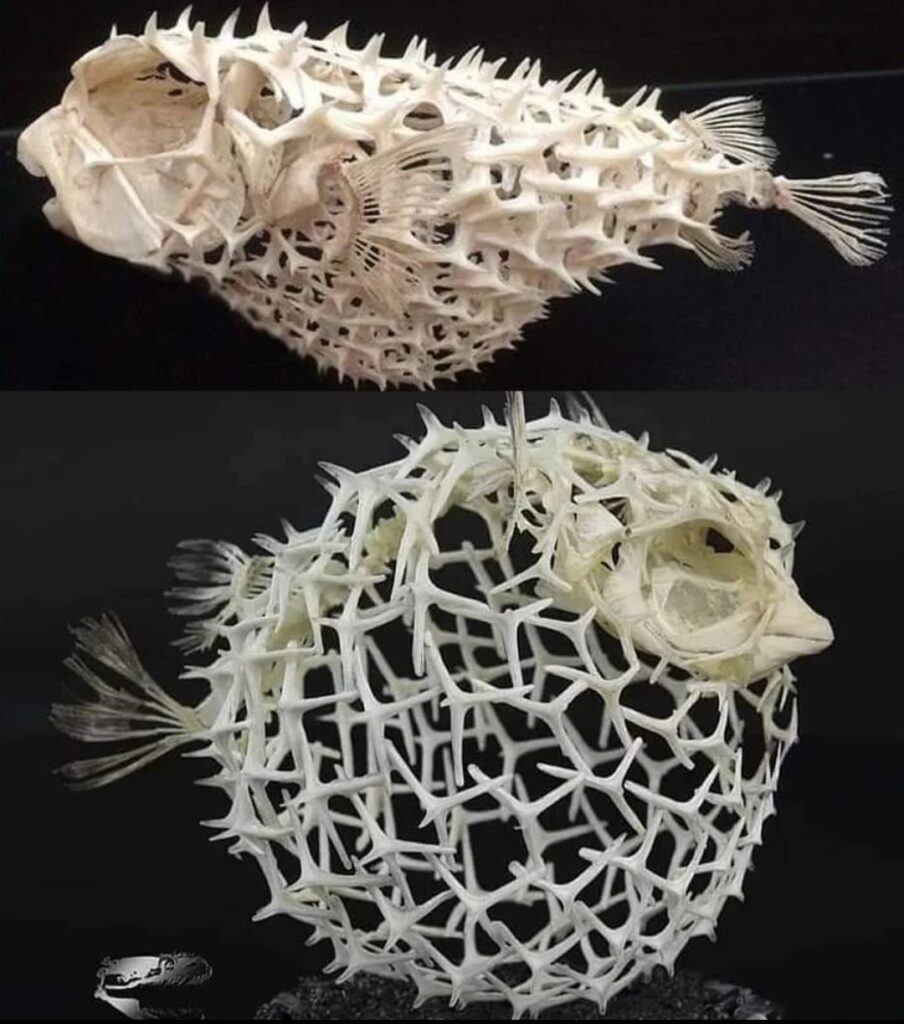
Is this really how pufferfish bones look like? The short answer is yes! However, there’s a catch – this is what the skeleton of an INFLATED pufferfish looks like!

Before we dive deeper into this quirky underwater phenomenon, let’s take a moment to backtrack. If you’ve ever had the chance to observe a pufferfish at an aquarium, you might have noticed something peculiar about them – they seem kind of stiff. Unlike regular fish that effortlessly glide through water with their graceful movements, pufferfish don’t bend at ALL in the middle. Instead, they navigate by wiggling their oversized fins with great effort, resembling a man who’s been duct-taped to an office chair, scooting around with his feet. No getting up allowed, just like our fictional character Brian!

Now, here’s the intriguing connection between their stiff movements and their peculiar spiky skeletons – there are no bones about it!
Take a closer look at the skeleton in the first picture, and you’ll notice that those spiky bones aren’t actually connected. They rest beneath the pufferfish’s skin like caltrops, ready to expand and spread outward when the pufferfish decides to inflate. So when the pufferfish ISN’T inflated, these bones neatly layer over each other, forming a robust armor consisting of multiple layers of bone spikes. While this armor isn’t particularly flexible, it serves a crucial purpose – it prevents some unsuspecting eel or other would-be predators from simply waltzing up and making a meal out of them. You have to admit; it’s an effective defense strategy!

In summary, pufferfish skeletons are undeniably cool, but they come at a cost. These unique skeletal adaptations impose a significant movement penalty on pufferfish, making their underwater journey less graceful but more secure. It’s a fascinating trade-off in the world of marine biology, where evolution has crafted ingenious solutions for survival in the depths of the ocean.

Leave a Reply